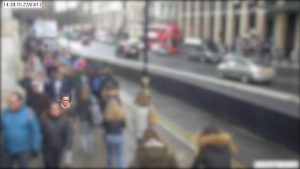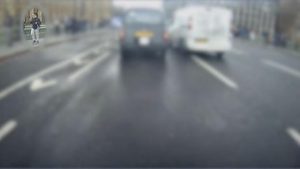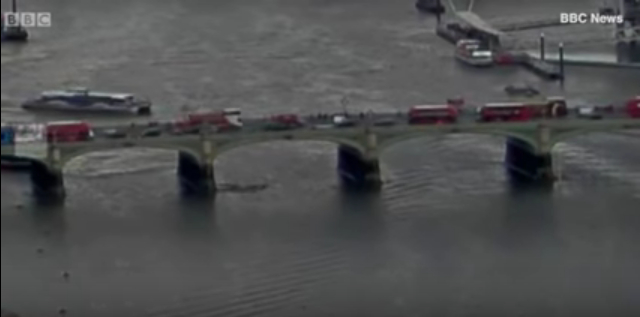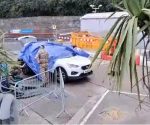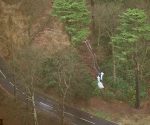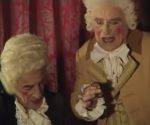Andreea Cristea and the Certificate of Death
The people who killed PC Keith Palmer think they have got all their ducks in a row at the inquest into the Westminster Bridge “terror attack” of 22nd March, 2017 – and they would have needed to make the effort to do it. The family of the murdered policeman are not happy, and they have every reason for it. The author has not fully looked into the specific area of the case (his attention being focussed on material for this article), but it looks like we can now explain an assailant in the grounds of Westminster with a police stand down, and the invasion of a mob of supposed bystanders amongst which the knife-man could make progress. More of this to come in the very next instalment, but to give the reader a taste of the trouble at the mill, here are a few extracts from corporate-media:
Westminster terror victim Pc Keith Palmer’s family want answers over alleged failures in Parliament’s security system, an inquest has heard.
(Source).
The family of PC Keith Palmer, murdered during a terrorist rampage on parliament, accused senior Metropolitan police officers of “closing ranks” after a coroner ruled on Wednesday that his death may have been prevented had armed officers been closer.
(Source).
Keith’s sisters Angela Clark and Michelle Palmer claim the force is blocking their bid for the truth at his inquest….
His siblings have said their questions about vulnerabilities in Parliamentary security had been ignored and they felt “battered and undervalued”.
Despite being told they were part of the policing family after PC Palmer’s funeral they now claim they have been met with hostility from the Met during the inquests.
(Source).
It’s apt that we have opened with a reference to ducks, because this article is about things that float in the Thames – principally the “body” of Andreea Cristea. If the reader will recall, Cristea is the woman who fell off of Westminster Bridge as the Hyundai 4×4 that was meant to have hit her was already somewhat further up the road. It’s all in the FBEL article, The odd tale of the woman who fell from Westminster Bridge. That piece also explained the central importance of Cristea’s plunge to the creation of a reality of a rogue driver: if a vehicle had not, in fact, at that time ploughed into people along Westminster Bridge, then an impression of it could nevertheless be created by someone falling into the water. The dive would provide optics of a terror attack in progress. And so, in the context of the Westminster Bridge attack as false flag terror, one has to be very suspicious of Cristea and her plight.
The one big red flag about Cristea that emerges from the inquest transcripts† is the impatience of the creature who goes by the name of Patterson (QC), when trying to get Danny Cooper, first mate on the Millennium Diamond, to concede that Cristea’s life was worth the saving. The Millennium Diamond was the boat whose crew first attended to a body in the water. Cooper, and the captain, Gordon Markley, were convinced that they were dealing with something that shouldn’t be prodded with a long pole in case it fell apart, being decomposed as they suspected it to be, to frighten the children on board and, arguably, somewhat in their care [23-25, 56 and 1-2, 57]. On the other hand, the crew of a London Fire Brigade boat, the Fireflash, found Cristea to be breathing on her own on being extracted from the water [21-22, 122]. Bear in mind that Cooper and Markley are employees of a private river transport company with over 30 years experience on the water between them. On the other hand, Thomas Wolfe, the White Watch manager at London Fire Brigade, Kensington, who testified about Cristea’s condition upon her rescue, had never been on the fire boat before [9-10, 115], and happened to be there on an “familiarisation visit” [5-6, 115]. In fact, earlier media reports said that the fire boat had been in the vicinity on an exercise (see the FBEL article, Westminster Bridge jump woman rescued (a week later), and Fire boat on drill shock) – but this drill doesn’t appear to deserve a mention at the inquest. We should not be surprised. In any case, the upshot is this: if the crew of the Millennium Diamond were not on message as they ought to have been, it’s not them who we should doubt. Indeed, even the author, looking at the images, at the time of the incident, from the safety of his “armchair” could see the way the wind was blowing:
Andreea couldn’t help herself to be rescued by the City Cruises crew – [meaning] that she was incapacitated; unconscious. Of course, it occurred to the author that what everyone was trying to receive had already become a corpse, or had already irretrievably started to drown to death.
This is pretty much what Cooper said in his testimony:
We initially thought [she’d been in the water for a long time]… Just because the only bodies I’ve ever seen that have been face-down and unconscious, unresponsive, have been in there for a few days. (19-24, 71)
If they’re moving, they can help theirselves out. There’s no way you can pull somebody up. If they are moving, a man overboard ladder or a scramble net would have come down over the side of the boat, it’s on the deck ready to throw, and they will pull theirself up. (6-10, 76)
In fact, Cooper’s# testimony provokes a question: how long was Cristea actually dead?
If her death had nothing to do with being in the river, this might explain the apparent official anxiety to establish that she had been alive on extraction from it.
Of course, it is true that the inquest has images of her on the bridge, but these things can be faked, staged or be taken at other hours and days shown on the superimposed timestamps (see below, and click to enlarge).‡
The crucial footage we’d need to see would be that which shows her alive and well, and being knocked into the Thames, because then we could witness her severe injury as being a result of the things the Metropolitan Police and British Government are claiming happened to her. Of this sort of imagery, there are two items: one appears to be that which had been released on the day of the incident, and which has been examined before here at FBEL. The other is described in the inquest transcripts; here, policeman DC Simon Osland is being examined by an individual by the name of Hough (QC), on day 3:
H: And pause, please. Now, this third clip I think is footage from the dashboard camera of a private vehicle?
O: Yes.
H: It, too, is going across the bridge from south to north bank, with the Palace of Westminster visible in the middle of the screen, and I think we’ll see the Hyundai car driven along the pavement on the left, striking a group along the stretch where Andreea was struck and thrown into the Thames?
O: Yes, that’s correct.
H: And is this right, if one looks very carefully, one can see signs of that happening?
O: Yes, it’s very hard to see, but if you look carefully, you can see Andreea going over the bridge.
H: So if we focus our eyes, is this right, just to the left of that taxi over on the left, between it and the front of the bus?
O. Yes. (2-20, 97)
Not very convincing, is it? One can see Andreea going over the bridge if one has brought along one’s binoculars, it seems. Or we could see it if we believed in it enough?
Of course, there were eyewitnesses to Andreea’s demise. Here is a descriptive answer given by one Michael Brown in response to questioning by Hough.
Yes, I saw the vehicle hit a lady. She went about 10 feet in the air. As she came down, she went straight over the side and into the Thames. (2-4, 27)
The problem with this testimony is that it doesn’t compliment the footage that was made available to the public in which Cristea becomes visible at road level, and then describes a half parabola into the river – as if she had dived, jumped, or been thrown off of the bridge on the outside of the parapet. In fact, one might imagine that anyone hit by a 4×4 would tend to be propelled forward, and downwards, what with its comparative height; in contrast lower cars would get underneath the body and scoop them upwards.
Then there is Cristea’s boyfriend, Andrei Burnaz. He was with her when she was taken. As such, it is a great surprise to discover that he is especially useless as a witness. At one point, he wasn’t sure if he was holding hands with Cristea at the time she was struck (4-25, 20). In fact, the way Burnaz describes the fateful moment is as if she wasn’t even there to begin with:
I saw in front of me, I saw a car zigzagging between the pavement and the cars that were stopped for the traffic lights. I couldn’t realise what was happening or what would happen, but after that I also — I also heard the screamings, another bumping, and I saw the car came in towards us. It was in the same second, let’s say. It was very quick, everything was very quick, and also in the same — in the same time, the same second, I felt a burning — a burning sensation on my left foot, and another banging, I think that the car hit, probably, Andreea. (15-25, 5)
After the vehicle passed, I looked in the — on the left side of me to search for Andreea, because I didn’t know what happened, but I couldn’t see her, so I turned my head backwards to see the car and to see if it will stop it, or something like this. (21-25, 6)
What is interesting is that Burnaz’ knowledge of being hit has nothing to do with what he saw. A car came towards him, and then his foot hurt. He didn’t see the car run over his foot, or approach close so as to be able to run him over. Likewise, his knowledge of Cristea being hit is also not related to anything he saw. He didn’t see her being struck – which is very odd. All of a sudden, Andreea had disappeared. Given that he then testified to how he ran hither and thither (1-2, 7) (with a crushed foot, or in his steel toe capped boots?) – not before finding Cristea’s phone and spectacles where once she had been (18-20,9) – and inexplicably started to contact friends and relations on his own mobile (page 10) [now seemingly not including Patrick Tracey, who Burnaz and Cristea were due to meet according to widely reported initial accounts – and pretty much reckoned to be an invention here at FBEL], one cannot help but think his story suspect (which is quite an understatement).
But there is a bigger stumbling block to the official narrative coming out of the inquest than Burnaz. When asked, on day 1 of the inquest, what time Cristea fell in the water, John Crossley, a detective superintendent attached to SO15, the Counter Terrorism Command for the Metropolitan Police (the praetorian guard), told Hough “14.40.22”; that is, forty minutes past two (18, 77). This time was subsequently treated as definitive [although it must be noted that, contrary to other evidence presented at the inquiry, Crossley appears to have stated that Cristea was in the water for 8 minutes and 55 seconds (23, 78)].
When asked by the same examiner about the time that the Millennium Diamond was due to set off from Westminster Pier, Danny Cooper gave the answer 2.40pm (7, 48); Gordon Markley confirmed this as the departure time (22, 87). Now consider the image below.
This is a still from the publically available footage said to show Cristea falling in the Thames; the splashesǂ show that Cristea has just entered the river. Look at the boat departing from Westminster Pier. It has the blue and white livery of a Thames Clipper boat (it is not a City Cruises vessel, and it isn’t theMillennium Diamond). Back in March 2017, it was suggested here at FBEL that this footage could show that Cristea fell in the river at 2.39pm, which was a departure time for a Thames Clipper boat from this particular pier (the online timetable cannot now be found). Indeed, this shows why Danny Cooper may have answered “There might have been a Thames Clipper in front of us as well” (10-11,58) when asked if there were any other vessels near the Millennium Diamond. That being said, there is only one thing that the information definitely tells us – the scene of Cristea falling in the Thames was not filmed just before, at or just after 2.40pm. This means that it cannot show her being hit by the 4×4.
Now, what does the reader think of this (statement by Gordon Markley):
I was just about to release Andreea, pass her to the fire launch, when it looked like this certificate had come out of her rucksack, and I believe I might have still had hold of the strap of her coat , and I quickly released her, sort of harpooned the certificate , flicked it onto the deck, and still had time to get back hold of her — the strap, and pass her over to the fire launch. (19-25, 98)
Shortly after, a police launch came alongside the Millennium Diamond and took possession (9-13, 99) of this mysterious piece of paper that Gordon Markley thought so important that it warranted being saved from the river. Naturally, the reader’s curiosity is piqued, so allow Mr Markley to fill in the details:
This piece of paper was actually a certificate and I presumed it had come out of her rucksack and it had — the emblem on it was of the Metropolitan Police, and I just thought that that had some significance to Andreea, and to have lost that as well, I just — I did it and I got it out the water, handed it over, and at no time did we lose control of that body. (6-12, 113)
Now, what was Andreea Cristea doing with an official piece of paper – a cerificate, if you please – issued by the Metropolitan Police?
† Please note that where reference is made to statements made at the inquest (held at the Old Bailey, remarkably, from the 10th September, and evidently continuing), numbers representing line-places and “pages” in the transcript are provided. Unless otherwise stated, all of the statements come from the transcripts for day 4, 13th September.
# For the record, Danny Cooper does mention blood emptying into the water when the body was disturbed. (12-14, 55)
‡ The author believes the blurring is necessary in case members of the public recognise themselves, and realise the image wasn’t captured on the date claimed for it.
ǂ The scale of the water disturbance emanating from the supposed entry of Cristea, a slip of a girl, into the river as if she were a bomb must now be viewed as a symptom of the trickery involved with her being placed in the water.




